Framing Statement
In this misguide adventure book, we are interested in making the audience or reader the lead role in a narrative that lets them interact and understand the work in new ways. We invite you to engage with the work, providing texture and tasks alongside facts and fiction. You get to engage with the tasks and follow your own route through the Usher. Practitioners and artists we have taken inspiration from are Wrights and Sites; the use of work from various authors and taking inspiration from Grayson Perry. Our thematic concern was to emulate a conceptual collage of ideas, routes, stories and experiences that are not usually part of the gallery experience.
Marketing Text
Imagine an adventure guide to the Usher Gallery that places you, the reader, as the lead in your own narrative. Using the works in the gallery you are guided from one picture to another developing the story and interacting with the art in new ways. Picture This: An Adventure Guide to the Gallery is a handmade book that asks you to interact with the work through six different developing stories. A sensory experience that allows the reader the opportunity to become invested in their own outcome; providing choices and tasks to immerse them in the written word and the art itself.
Analysis of Process
What makes Site Specific Performance?.
When first heading into this process of creating a site specific performance I was unsure of how what my performance would end up being. What started my process was reading Sue Palmers thoughts on what made a performance site specific. She states that it is not just about the specific location, although that is important, but it is about the people that inhabit the site. If it wasn’t for the people the space “wouldn’t exist without them” (Pearson, 2010, 8). This is a theory that I carried throughout the whole of my process.
When first exploring the space of the Usher Gallery and Collection, I would walk around tentatively and quietly. I would be embarrassed or uncomfortable if I made to much noise. As that is the way I have been brought up to behave in a gallery. This got me to thinking about how we looked walking around the gallery.
People Watching.
The first week I was asked to respond to a question and create a performance that was site specific.
My question was, If the walls could talk what would they say?
One of the first idea’s I had was that if the walls could talk they would talk to each other. I then went onto think what they would talk about, would they talk about the art work and the artefacts that are in the Usher Gallery or the Collection Museum or would that not bother them. I then went on to think that maybe they would instead talk about the people that come to visit the Museum and Gallery.
To then create a performance out of this idea, I went to the Usher Gallery, sat for an hour and watched the people that entered noting down everything they did as if I was relaying the information to someone else. This is what I created:
A Projection on the wall, showing a live feed of what is happening being typed out by someone in the room.
A man wearing glasses is sitting in a chair his hands on his lap, he is silent.
There is a noise of children in the next room talking, shouting and running around.
The man in glasses starts to clear his throat.
From above comes the sound of someone walking around.
Still the man sits and looks around the room.
The occasional voice of a teacher cuts through the children’s voices.
The man in glasses slowly falls asleep.
The sound of the air conditioning is battling with the noise of the children.
Two female workers walk through busy in discussion.
The children in the next room are silenced.
The man in glasses snores and wakes himself up.
A bald headed man comes in from another room and before exiting stops and puts his hat on, he then exits.
Suddenly there is silence.
The two female workers return, stopping to talk before leaving the gallery.
One of the workers return and walks straight through without stopping.
Still the man in glasses sits and sleeps then wakes himself up in a constant cycle.
A woman in a purple jacket opens the door and hold it open waiting for a man who appears to be her partner.
They stand with their hands behind their back viewing the different paintings.
The man puts his hand around the woman’s shoulders.
The man calls the woman in a purple jacket back to him to show her the description of a painting.
They carry on around the room discussing the women in the paintings.
All while the man in glasses sleeps.
The man leaves the woman in a purple jacket and exits the room without her.
The woman in the purple jacket shortly follows him.
This performance task it sparked my interest with the people in the gallery and how the public move around the space. This long the general public spend looking at each piece of artwork and whether they look at the art in great detail or just glance at it. In an experiment about how long people spend in galleries and how much they remember the artwork “All participants who stayed inside for longer than 6 minutes correctly recognised between 75% and 100% of pictures” (Krukar, 2014, 192). This short performance has helped to create a step towards the final performance idea, as it helped me focus my ideas into one area.
Blast Theories Influence.
When researching site specific companies Blast Theories work stood out to me. Blast Theory often use “new forms of performance and interactive art that mixes audiences across the internet, live performance and digital broadcasting.” (Blast Theory, 2015) They include the audience in their performances, they get the audience to interact with their work.
One of their most recent performances, Karen, mixes technology with storytelling. Karen is an app which acts like a personal life coach. “Karen is a system that gets to know you. She/it uses data about your behaviour – whether freely given or obtained by monitoring – to give you an experience that is personalised, adaptive and intriguing.” (Blast Theory, 2015).
The interaction between the app and the audience is interesting, how the audience would answer questions and a different outcome would occur, the audience had to be involved with the performance otherwise it would not work.
Our first performance pitch.
Our original performance pitch needed a lot of re-working. We were originally going to look at the social conventions of the art gallery, for example how it is normally a quiet place and if you spoke loudly you would get weird looks. As a group we wanted to look at how we can represent the opposite of these conventions. Our original idea that we pitched was that we wanted to do three solo performances that all work towards the same goal.
We wanted to document the process by the public writing their opinions on our actions on post it notes and the sticking it on us. We would also document our process getting to that point by interviewing the general public on how the feel they need to act in galleries to inspire how we act in our performance.
The feedback we received prompted us to re evaluate what our aims were.
We have since gotten feedback on our idea and have rethought our performance and how it should be more about the audience’s interaction with the artwork and how they engage with the work. Rather than the way they feel they should move around the gallery.
Wrights and Sites.
When re working our performance the site specific theatre company that caught our attention was Wrights and Sites. Their work is shaped by the city that they are working in. In their manifesto they talk about “devising walking’s that are specific to their routes, to their surroundings.” (Wrights and Sites, 2008) This is exactly what we are hoping to do with our Choose Your Own Adventure book.
It was their work in Weston-Super-Mare called Everything you need to build a town is here that sparked my interest. Their approach in this project was a starting point in creating our own guide of the gallery. In Weston-Super-Mare they put up signs in certain places throughout the city, on these signs the messages were quite playful they are “designed to encourage the reader … to conduct an action or thought experiment” (Wonders of Weston, 2010). In our work we wanted to use this idea of interacting with the audience in our work.
Choose your own adventure.
From the feedback that we got from our second performance pitch we went back to the inspiration from Blast Theory and Wrights and Sights, to get our performance idea. We worked more on the idea of a book that the audience can create an individual performance for themselves. It felt like the guide would be more intuitive and engaging if the readers of the guide were to walk around the gallery by themselves. It would then become their own journey.
This has evolved from our first idea but still kept the essence of wanting to explore more than just the paintings in the gallery. We still get to explore how someone may move around a gallery. However we will be the ones to guide them through.
Our guide that we have created and plan to use will take the form of a Choose Your Own Adventure book. Meaning that at the end of each page there will be a direction or a choice of what page to turn to next. The pages in the book will take the reader around various paintings via a narrative that links them together.
We have gone around the gallery and found pictures that we believe link and then create a fictional story to form a personal link between the pieces of artwork.
TED Talk.
Thomas P. Campbell in his TED talk – Weaving Narratives in Museum Galleries, makes some good points about the audience’s interactions with artwork that helped us re think our performance. When talking about the artwork in galleries he wants the visitors to slowdown to view and appreciate the objects and paintings. He talked about the audience needing to be “a little bit lost, to explore to see the unfamiliar in the familiar or to try the unknown” (Ted, 2012) and to bring “them face to face with great works of art” (Ted, 2012). This was something that I wanted to include in my performance. I wanted the people who came to the gallery to engage with the artwork as a gallery is a place “where their curiosity can expand” (Ted, 2012). The way that this has been included in our guidebook is that at various points in the book the readers were asked to do a small task for example write a letter to Grayson Perry or come up with a name for a dog which is in one of the paintings. We felt that if we put small tasks in the book then the audience will spend more time at the painting and think more about the works of art.
Letter to a young practitioner.
Goat Island’s Letter to a Young Practitioner is a collaborative piece of writing by a group of artists, we were asked to go into our performance groups to read and reflect on this writing. The letter is a personal and intimate letter to a young artists gives us advice and “lessons if you will” (Mitchell et al, 2000).
While reading we found that a lot of the lessons were new to us and could be useful to keep in mind when creating our performance. The biggest one being “#3. Make small plans” (Mitchell et al, 2000). In the process we tended to over complicate our ideas and then get muddled in what we are doing and then we would go round in circles. Goat Island in this letter told us to “dream the smallest thing you can think of and try to perfect that” (Mitchell et al, 2000). By focusing on the smaller things we were more easily able to create the bigger picture. In our performance by focusing on the narratives and not thinking of the bigger plan everything came together a lot easier. When it came to the site we needed to focus on a small amount of artwork rather than including everything in the gallery.
The next lesson that we took from this letter relates quite closely to the third piece of advice. This is to “#5. Work slowly.” (Mitchell et al, 2000). We found that we were moving so quickly that we were missing important details. For instance when it came down to writing the directions to each piece of artwork we didn’t go into enough detail as we didn’t spend enough time on that section.
This letter has taught us to spend more time and to focus on the smaller issues. By following these lessons our work will be of a much better quality as we will have given it more care and attention.
Final rehearsals.
The performance day is drawing closer and with that means our book is coming into the final stages. We came into some problems when we first tested the book out on people in the class. We found that our directions to at the top of the page to get to each piece of artwork were quite poor. We were noticing that people were wandering around the gallery hoping to spot the art they were looking for. To combat this we went to the usher gallery website and looked at their map. From this we created our own and numbered each room to help with the clarity of our directions.
Once the pages were initially written we went back to re draft them. The feedback we received showed that more connection was needed with the paintings, both in the text and also the physical pages themselves. So this time when I went back to re draft my pages I researched more into the paintings and their meanings. For example I learnt that the painting From Pont Aberglaslyn had a mythical history relating to the devil, there then became an easier link between that and the following painting of a cathedral.
When put all together the book didn’t seem complete. In A Sardine Street Box Of Tricks Crab man and Signpost when talking about the environment they did their tour “you need to be hyper-sensitised to the flows, stories and textures of what is around you.” (Crab Man and Signpost, 2011, 12) This relates to our guidebook. We got the idea to use different textures in our book. For example when standing in front of the kimono painting I covered with fabric so there was a texture that represented the fine fabric of the kimono.
We decided that on the day of performance we would be walking around the gallery helping out if people were lost or didn’t know what to do. We decided on this as we didn’t want to take away any value from the book itself.
Performance Evaluation.
On the day of the performance I was unsure at the level of involvement that the audience would partake in. During the 2 hours that our adventure guidebooks were available there was a steady stream of people welcome to the idea of trying out the guidebook. The feedback that we received from the people taking part with the guide were immensely positive. The audience felt that it was a new and interesting way to intrigue with the gallery, however one member of the public said that if she had come purposefully for the guide it would have been more enjoyable. There were also issues with the members of public that were more elderly, feedback we got was that there was too much going up and down the stairs which is harder for people that get tired more easily.
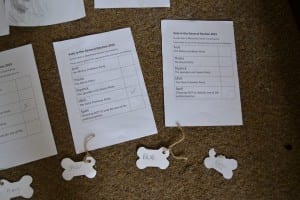
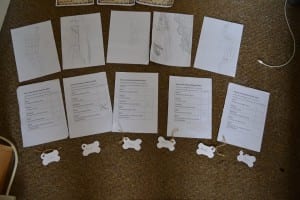
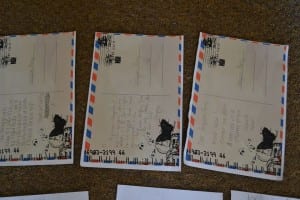
What worked particularly well was the interaction with the artwork. The tasks in the book got people to look at the artwork much closer than they maybe originally would have. In future performances to combat the troubles people had with the guide is to have a separate book for the exhibitions that are going on. This then allows the public to see all the paintings in one room before moving on. If I were to do the performance again, I would incorporate the making of the book into the performance on the day. The creation of the book had a lot of repetitious movements that would work well in performance with enough rehearsal.
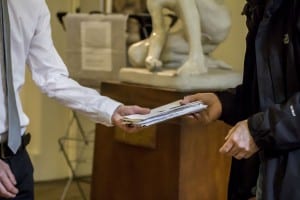
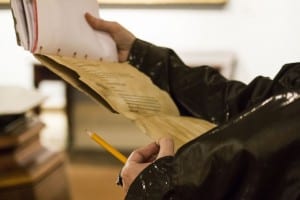
(Photo Credit: Fenia Kotsopoulou)
Works Cited
Blast Theory (2015) Our History & Approach. [online] Brighton: Blast Theory. Available from http://www.blasttheory.co.uk/our-history-approach/ [Accessed 8 February 2015]
Blast Theory (2014) Karen. [Online] Blast Theory. Available from http://www.blasttheory.co.uk/projects/karen/ [Accessed 8th February, 2015].
Crab Man and Signpost (2011) A Sardine Street Box of Tricks. Exeter: Blurb.
Krukar, J. (2014) Walk, Look, Remember: The Influence of the Gallery’s Spatial Layout on Human Memory for an Art Exhibition. Behavioural Sciences, 4(3) 181-201.
Mitchell et al (2000) Letter to a Young Practitioner. [online] Chicago. Available from: http://www.goatislandperformance.org/writing_L2YP.htm [Accessed 15 April 2015]
Pearson, M. (2010) Site-Specific Performance. Hampshire: Palgrave Macmillan.
Ted (2012) Thomas P. Campbell: Weaving narratives in museum galleries. [online video] Available from https://www.ted.com/talks/thomas_p_campbell_weaving_narratives_in_museum_galleries?language=en#t-914618 [Accessed 17 February 2015]
Wonders of Weston (2010) Everything You Need to Build a Town is Here. [online] Weston-Super-Mare: Available from http://www.wondersofweston.org/artworks/everything-you-need-build-town-here [Accessed 14 April 2015].
Wrights and Sites (2008) A Manifesto for a New Walking Culture: ‘dealing with the city’. [online] Available from http://www.mis-guide.com/ws/documents/dealing.html [Accessed 7 April 2015]
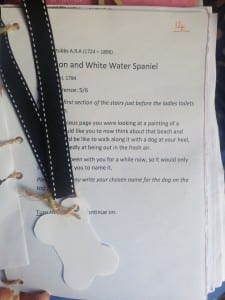
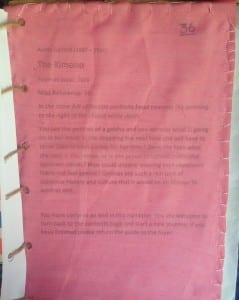
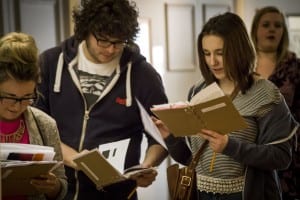
Recent Comments